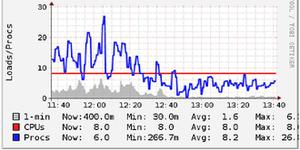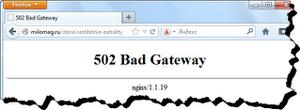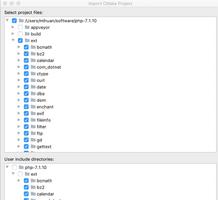python模块概况,json/pickle,time/datetime,logging

参考:
http://www.cnblogs.com/wupeiqi/articles/5501365.html
http://www.cnblogs.com/alex3714/articles/5161349.html
1、模块的分类
内置模块:存放在lib目录下
第三方模块:通常放到site-packages目录下
自定义模块:可以通过sys.path.append(module_path)添加模块到搜索路径
2、 模块的调用顺序
按path列表从前到后的顺序按模块名搜索模块。一定避免模块重名,不要和内置模块重名。
import sysfor i in sys.path:
print(i)
打印结果类似下面:
/usr/local/lib/python35.zip
/usr/local/lib/python3.5
/usr/local/lib/python3.5/plat-linux
/usr/local/lib/python3.5/lib-dynload
/root/.local/lib/python3.5/site-packages
/usr/local/lib/python3.5/site-packages
3、导入模块的几种方法
import module 导入同级目录下的单模块
from module.xx.xx import xx 导入嵌套在文件夹下的模块
from module.xx.xx import xx as rename as后面是模块的别名
from module.xx.xx import *
4、安装第三方包
python3自带pip模块,因此可以使用 pip install <package name> 安装第三方包
也可以使用源码安装。去官网 https://pypi.org/ 搜索你要下载的包,解压后,转到安装包目录下,运行 python setup.py install
5、json/pickle模块,序列化与反序列化
json.dumps(data) 将基本数据类型转换为字符串
json.loads(str) 将字符串转换为基本数据类型。注意:通过loads反序列化时,一定要用双引号把字符串括起来(因为在其他程序语言中,字符串是用双引号括起来的)
json.dump(data,open('file','w')) 将基本数据类型转换为字符串,并将其写入文件file
json.load(open('file','r')) 从文件file读字符串,将字符串转换为python基本数据类型
dic = {1:'a',2:'b'}print(dic,type(dic)) #{1:'a',2:'b'}, class 'dict'
res = json.dumps(dic) #将字典dic转换为字符串res
print(res,type(res)) # "{1:'a',2:'b'}" class 'str'
li = '[1,2,"kaye"]' # 内层用双引号,外层用单引号,否则会报错!!
print(li,type(li)) #'[1,2,"kaye"]', class 'str'
res = json.loads(li) #将字符串li转换为列表res
print(res, type(res)) #[1,2,"kaye"], class 'list'
requests.get()方法从API获取字符串,用json.loads()把字符串转换为python基本数据类型。代码如下:
import requestsimport json
res = requests.get('http://wthrcdn.etouch.cn/weather_minni?city=北京')
requests.encoding = 'utf-8'
dic = json.loads(res.text)
print(dic,type(dic))
pickle.dumps(data) 将python对象转换为字符串
pickle.loads(str) 将文件内容转换为python对象
pickle.dump(data,open('file','wb')) 将python对象转换为字符串,并将其写入文件file,一定要加b(表示以二进制存储到文件),不然会报错
pickle.load(str,open('file','r')) 从文件file读字符串,将文件内容转换为python对象
json VS pickle
json模块可以支持跨语言的基本数据类型(支持python,c#,php.....等多种语言,但是只支持基本数据类型包括列表、字典、元组等等)
pickle模块可以对复杂类型做操作,比如对象,但是不能支持python以外的其他语言
6、time/datetime模块
import timeprint(time.time()) # 返回当前时间戳(从1970年1月1日开始计时到现在,一共有多少秒)
print(time.ctime()) # 返回当前时间,可读性更好
print(time.gmtime()) # 获得格林威治时间(UTC时间)的struct_time模式(时间对象),该对象属性包括tm_yaer,tm_mon,tm_mday,tm_hour,tm_min,tm_sec,tm_wday,tm_yday,tm_isdst
print(time.localtime()) # 和gmtime类似,但返回的是本地时间
print(time.mktime()) # 将stuct_time格式转换为时间戳
print(time.sleep()) # 程序在这里睡眠/延迟,用于处理阻塞
print(time.strftime()) # 将stuct_time格式转换为指定的字符串格式,eg. time.strftime("%Y-%m-%d %H:%M:%S")
print(time.strptime()) # 将字符串格式的时间转换成struct_time格式, eg. time.strptime("2016-09-21","%Y-%m-%d")
datetime模块是对time模块是封装。datetime取日期更方便,time模块取时间戳更方便。
import timeimport datetime
print(datetime.date.today()) # 返回格式2016-09-21
print(datetime.date.fromtimestamp(time.time()) # 将时间戳转换为人类可读的格式
print(datetime.datetime.now() # 返回当前时间
pritn(datetime.datetime.now().timetuple() # 返回struct_time格式
print(datetime.datetime.now() + datetime.timedelta(days=10)) # 比现在加10天
print(datetime.datetime.now() + datetime.timedelta(days=-10)) # 比现在减10天
print(datetime.datetime.now() + datetime.timedelta(hours=-10)) # 比现在减10小时
print(datetime.datetime.now().replace(2014,5,15)) # 把当前时间中的年月日替换成2014,5,15
print(datetime.strptime()) # 将字符串的时间转换为struct_time格式
盗图几张
7、logging模块
import logginglogging.basicConfig(filename='log.log',
format='%(asctime)s - %(name)s - %(levelname)s -%(module)s: %(message)s',
datefmt='%Y-%m-%d %H:%M:%S %p',
level=10)
logging.debug('debug')
logging.info('info')
logging.warning('warning')
logging.error('error')
logging.critical('critical')
logging.log(10,'log')
日志的种类:
| Level | When it’s used |
|---|---|
DEBUG | Detailed information, typically of interest only when diagnosing problems. |
INFO | Confirmation that things are working as expected. |
WARNING | An indication that something unexpected happened, or indicative of some problem in the near future (e.g. ‘disk space low’). The software is still working as expected. |
ERROR | Due to a more serious problem, the software has not been able to perform some function. |
CRITICAL | A serious error, indicating that the program itself may be unable to continue running. |
日志等级:
CRITICAL = 50FATAL = CRITICAL
ERROR = 40
WARNING = 30
WARN = WARNING
INFO = 20
DEBUG = 10
NOTSET = 0
注:只有【当前写等级】大于【日志等级】时,日志文件才被记录。
import logginglogging.basicConfig(filename='example.log',level=logging.INFO) # logging.INFO = 20
logging.debug('This message should go to the log file') # debug等级是10,小于当前写等级20,因此不会写入到日志文件
logging.info('So should this') #info等级是20
logging.warning('And this, too') #warning等级是30
如果想同时把log打印在屏幕和文件日志里,就需要了解一点复杂的知识 了
The logging library takes a modular approach and offers several categories of components: loggers, handlers, filters, and formatters.
logging模块提供了几个组件,包括logger, handlers, filters, formatters
- Loggers expose the interface that application code directly uses. loggers把接口暴露给代码直接使用
- Handlers send the log records (created by loggers) to the appropriate destination. handlers发送日志信息到相应的目的地
- Filters provide a finer grained facility for determining which log records to output. filters提供细粒度的工具来决定哪些日志信息要输出
- Formatters specify the layout of log records in the final output. formatters声明日志信息的输出结果应该如何布局
import logging#create logger
logger = logging.getLogger('TEST-LOG') # 获取日志对象
logger.setLevel(logging.DEBUG) # 全局日志级别
# create console handler and set level to debug
ch = logging.StreamHandler() # 创建输出到屏幕的句柄
ch.setLevel(logging.DEBUG) # 设置输出到屏幕时的日志级别
# create file handler and set level to warning
fh = logging.FileHandler("access.log") # 创建输出到文件的句柄
fh.setLevel(logging.WARNING) # 设置输出到文件时的日志级别
# create formatter
formatter = logging.Formatter('%(asctime)s - %(name)s - %(levelname)s - %(message)s')
# add formatter to ch and fh
ch.setFormatter(formatter) # 对输出到屏幕的句柄,设置输出格式
fh.setFormatter(formatter) # 对输出到文件的句柄,设置输出格式
# add ch and fh to logger
logger.addHandler(ch) # ch句柄添加到logger
logger.addHandler(fh) # fh句柄添加到logger
# 'application' code
logger.debug('debug message')
logger.info('info message')
logger.warn('warn message')
logger.error('error message')
logger.critical('critical message')
全局日志级别 VS 局部日志级别
当全局日志级别高于局部日志级别,以全局日志级别为准
当全局日志级别低于局部日志级别,以局部日志级别为准
小结一下上面代码中的逻辑:
1,创建一个logger,为logger设定日志级别(setLevel)
2,创建handler(输出到屏幕的是StreamHandler,输出到文件的是FileHandler),为handler设置日志级别(setLevel)
3,创建formatter,将formatter注册到handler(setFormatter)
4,将handler注册到logger
Formatter对象的属性如下:
以上是 python模块概况,json/pickle,time/datetime,logging 的全部内容, 来源链接: utcz.com/z/388005.html







